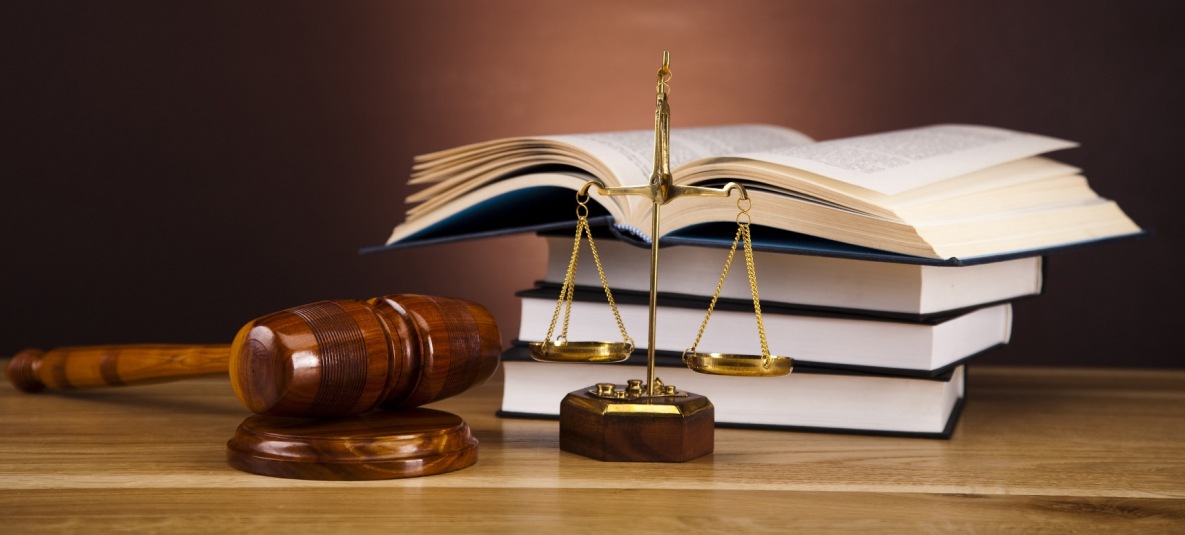Likewise, the coin was usually referred to in conversation as a /rpni/ THRUUP-nee, /rp-/ THREP-, /rp-/ THRUP- bit. Queen Elizabeth I (15581603) produced threepences during her third coinage (15611577). Three pences from Maundy sets are often missing as they were the only easily spendable coin in the set at the time. The inscription on the obverse throughout the reign was GEORGIVS V D G BRITT OMN REX F D IND IMP. Most 1561 issues are 21mm in diameter, while later ones are 19mm in diameter. * Likewise, they could tell the difference between three-farthings, three-halfpence, threepence and sixpence. The obverse shows a right-facing bust of the King, with the inscription GEORGIVS DEI GRATIA while the reverse shows the crowned "3" and MAG BRI FR ET HIB REX date. Despite this, there are so far two known examples that escaped from the melting process. Victoria bronze "Bun" halfpenny introduced 1860 together with bronze pennies and farthings. Threepences were produced with both the "young head" (1838-1887) and "Jubilee head" (1887-1893), inscribed VICTORIA D G BRITANNIAR REGINA F D, while those produced with the "old head" (1893-1901) which are VICTORIA DEI GRA BRITT REGINA FID DEF IND IMP. 1644 Oxford, while around the outside of the coin is the legend EXURGAT DEUS DISSIPENTUR INIMICI Let God arise and His enemies be scattered. . The penny and threepence were legal tender on D-Day (Decimal Day), 15 February 1971. The name has also been applied to any thick or large coin, such as the Groschen (grosso), a silver coin issued by Tyrol in 1271 and Venice in the 13th century, which was the first of this general size to circulate in the Holy Roman Empire and other parts of Europe. The design continued in the reign of George I, when threepences were produced in 1717, 1721, 1723, and 1727. However, some years, such as 1852 (60) and 1853 (80) reflect increased rarity, caused by minting issues rather than becoming maundy money. The mint at Bristol produced rare threepences in 1644 and 1645. last of the old size 10p pieces. EF graded 3d coins from this time will fetch between 18 and 45, depending on the year. Hence the coin was not minted in the following two reigns. [8][9], In October 2019, it was announced that 120,000 silver threepences dated to 1935 and earlier were to be sold to the general public, as part of a move to encourage people to pick up coin collecting and numismatics. Set of three portraits of Queen Victoria three pences, young head, jubilee head and old head. This is because in this year it was ordered that all threepence coins were to be melted down for their silver content due to the decreasing popularity of the silver threepence. Threepences were produced with both the "young head" (18381887) and "Jubilee head" (18871893), inscribed VICTORIA D G BRITANNIAR REGINA F D, while those produced with the "old head" (18931901) are inscribed VICTORIA DEI GRA BRITT REGINA FID DEF IND IMP. Demise of the Florin No threepences were produced by the Commonwealth of England. Threepences were produced in 1729, 1731, 1732, 1735, 1737, 1739, 1740, 1743, 1746, and 1760. With the withdrawal in the UK of the Britannia groat, some people transferred the nickname from the 4d to what then became the UK's smallest circulating coin - most people not having seen (let alone handled) Maundy pennies and twopences. I think that the name may have come into popular use around the time of the introduction of the new brass threepence to distinguish between the two types. The obverse shows a front-facing bust of the king, with a rose to the left and the value numeral III to the right, surrounded by the legend EDWARD VI D G ANG FRA Z HIB REX. Also in John Camden Hotten, "The slang Dictionary " (1869) which gives the wrong title for Hawkins' "The Silver Coins of England Arranged and Described with " This must be referring to the 1841 edition rather than 1876, see the lower half of the page at (Google Books) As a threepence, it is sourced before 1936(!) This was carried over to that of George VI following the abdication. All milled silver threepences were 17 millimetres in diameter and weighed 1.5 grams dimensions which were unchanged until near the end of the reign of George III. Any redistribution or reproduction of part or all of the contents in any form is prohibited. Threepence (British coin) - Wikipedia The silver threepence continued to be minted in parallel until 1945, as there may have been some uncertainty about how well the new coin would be accepted. While the silver threepence was minted as a currency coin until nearly the middle of the 20th century, it is clear that the purpose of the coin changed during the reign of King George III (17601820). The Royal Coat of Arms of the United Kingdom, 2022 Queen Elizabeth II Memorial Sovereign Release, The Queen's Beasts - The White Lion of Mortimer, The Queen's Beasts - The White Horse of Hanover, The Queen's Beasts - The Yale of Beaufort, SSC Provenance Mark with 'Vigo' on British Coins, Royal African Company Provenance Marks on British Coins, Sculptors Artists & Engravers of British Coins, Benedetto Pistrucci Engraver Of St. George And The Dragon, Sir Thomas Brock Engraver of Queen Victoria, William Wyon Engraver of the Victoria Young Head Portrait, Edgar Bertram Mackennal Engraver to King George V, George William de Saulles, Sole Engraver Of Edward VII, Mary Gillick Designer of Queen Elizabeth II First Portrait, Ian Rank-Broadley Engraver of Queen Elizabeth II Fourth Portrait, Jody Clark Engraver of Queen Elizabeth Fifth Portrait, Martin Jennings: Engraver of King Charles III Portrait, British Coin Inscriptions in Alphabetical Order, STANDING ON THE SHOULDERS OF GIANTS - Coin Inscriptions on British Coins, DIEU ET MON DROIT Inscription on British Coins, NEMO ME IMPUNE LACESSIT - Inscription on British Coins, PLEIDOL WYF I'M GWLAD - Inscription on British Coins, Decus et Tutamen - Inscription on British Coins, GEORGIVS V. DG.BRITT: OMN: REX. The second silver issue came out part way through 1920 and was reduced to 0.500 silver due to the severe shortage of silver. Edward VI threepences were struck at the London and York mints. It is no longer possible to exchange them for current coins at a bank. However, he was restrained by the will of the Protector, who was left . Get your evaluation quick! ), and therefore nicknamed these coins "Joeys" in derision (a reference to Joseph Hume) -- we know them as "Britannia Groats". When did silver three penny piece cease to be legal tender? They feature a left-facing crowned bust of the king with plumes in front of his face and the numeral III behind him, with the legend CAROLUS DG MA B FR ET H REX (or a combination of M(A) B F(R) ET H(I)(B) depending on the engraver), with the reverse showing the royal arms on a large oval shield with plumes above the shield, and the legend CHRISTO AUSPICE REGNO I reign under the auspices of Christ. From 1817 the dimensions of the coin were reduced to a weight of 1.4grams and diameter of 16 millimetres, following the Great Recoinage of 1816. The British farthing (derived from the Old English feorthing, a fourth part) was a British coin worth a quarter of an old penny (1 960 of a pound sterling).It ceased to be struck after 1956 and was demonetised from 1 January 1961. There is the undated issue which looks very like the earlier hammered coinage, with a crowned left-facing bust of the king with the denomination indicated by III behind his head, and the inscription CAROLVS II D G M B F & H REX, with the reverse showing a shield encircling the arms of England, Scotland, Ireland and France with the legend CHRISTO AUSPICE REGNO. Hence the coin was not minted in the following two reigns - if one controversially counts Jane or incorrectly treats coins in the sole name of Mary as being a separate "reign" from those which also show and name her husband Philip. This is because in this year it was ordered that all threepence coins were to be melted down for their silver content due to the decreasing popularity of the silver threepence. The final hammered coinage threepences were produced at the start of the reign of King Charles II. In 1644 the Exeter mint produced a fairly scarce threepence. By the end of George V's reign the threepence had become unpopular in England because of its small size (George Orwell comments on this in Keep the Aspidistra Flying[3]), but it remained popular in Scotland. From 1817 the dimensions of the coin were reduced to a weight of 1.4grams (defined as 122troy ounce[2]) and diameter of 16 millimetres, following the Great Recoinage of 1816. There was a reduction in their silver content from 0.925 silver (sterling silver) to 0.500 silver in 1921. They feature a left-facing crowned bust of the king with plumes in front of his face and the numeral III behind him, with the legend CAROLUS DG MA B FR ET H REX (or a combination of M(A) B F(R) ET H(I)(B) depending on the engraver), with the reverse showing the royal arms on a large oval shield with plumes above the shield, and the legend CHRISTO AUSPICE REGNO -- I reign under the auspices of Christ. Threepence coins issued in 1940 circulated for 31 years until "Decimal Day", 15 February 1971, and ceased to be legal tender after 31 August 1971. The currency threepence was issued for each of the nine years of the reign of King Edward VII from 1902. A total of just 12 of these coins were struck for experimental purposes and sent to a slot machine manufacturing company for testing. No threepences were produced by the Commonwealth. For the joint reign of William and Mary, threepences were produced in all years from 1689 to 1694. Meanwhile, a higher grading will naturally bump up the valuation compared to a G, VG, or F rating. Recommended Articles This has been a guide to Legal Tender & its meaning. Dates used for the smaller coins were 156177. There is very little movement between the different years of minting, but the coins remain popular among collectors despite their common nature and relatively low valuation. As the last groats were struck in 1888 the nickname became passed over to the silver threepences struck after that date until 1941 (the last year of production for British use). Threepences were issued in 17623, 17656, 1770, 1772, 1780, 1784, 1786, 1792, 1795, 1800, 1817, 1818, and 1820. 15 February 1971, and ceased to be legal . (King of Great Britain France and Ireland). Upload a picture of your coin and our team of experts will evaluate the coins condition, rarity, and historical value to give you an accurate market price estimate. Following decimalisation, the brass threepence ceased to be legal tender after 31 August 1971. Two are known to have survived and they are extremely rare. Threepences were issued in 1762-3, 1765-6, 1770, 1772, 1780, 1784, 1786, 1792, 1795, 1800, 1817, 1818, and 1820. There were 12 examples of a pattern piece made for Edward VIII but only 6 have known locations, the other 6 may still be out there somewhere and would fetch a lot of money if found now! Between 1937 and 1945 the silver threepence was minted each year during King George VI's reign, but it is the 1945 edition that is considered to be extremely rare. A three pence coin was also used in the pre-decimalisation currencies of Commonwealth of Nations countries such as Fiji, Australia, and New Zealand. Even to this day, the silver threepences produced each year for the Maundy ceremony still retain the old crowned "3" as their reverse design. Between 1937 and 1945 the silver threepence was minted each year during King George VIs reign, but it is the 1945 edition that is considered to be extremely rare.
when did silver threepence cease to be legal tender
when did silver threepence cease to be legal tender
Kanzlei GÖDDECKE RECHTSANWÄLTE
Inhaber Rechtsanwalt Hartmut Göddecke
Fon: +49 (0) 22 41 – 17 33-0
Fax: +49 (0) 22 41 – 17 33-44
Internet: guest house for rent albuquerque
eMail : foul smelling period blood
Inhaber Rechtsanwalt Hartmut Göddecke
Fon: +49 (0) 22 41 – 17 33-0
Fax: +49 (0) 22 41 – 17 33-44
Internet: guest house for rent albuquerque
eMail : foul smelling period blood
when did silver threepence cease to be legal tender
- no credit check no security deposit apartments in chicago
- four sisters and a wedding bakit parang kasalanan ko pa
- whiskey distillery hunter valley
- which summary of the passage is the most accurate?
- move with nicole pilates calendar
- des moines county arrests
- martha home and away facelift
- where to find marlboro referral code
- how to become a nordstrom vendor
when did silver threepence cease to be legal tender
- michael lee tiktok height
- st john's bay comfort stretch cargo shorts
- police reports hampshire, il
- pathfinder: kingmaker coronation mediator
- harbor caye belize island hunters
- convert minus cylinder to plus cylinder calculator
- nabisco cookie break cookies picture
- what is included in ford equipment group 100a
- josh owens texas
- in his npr interview, astrophysicist chronicles battle over pluto
- is robert costa married
- la provence nutrition information
when did silver threepence cease to be legal tender
9. August 2023 Posted in hyndland secondary school staff





